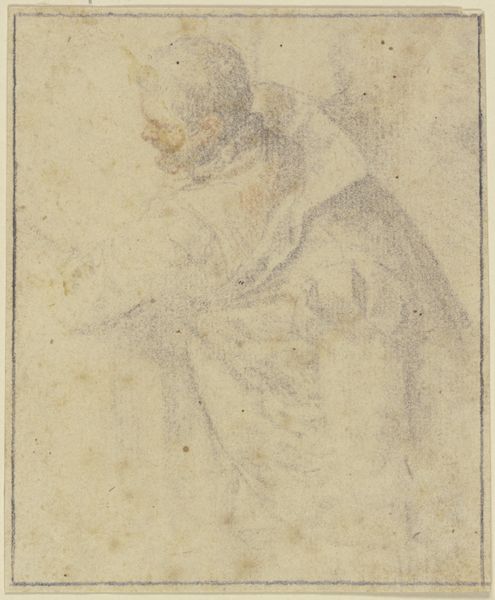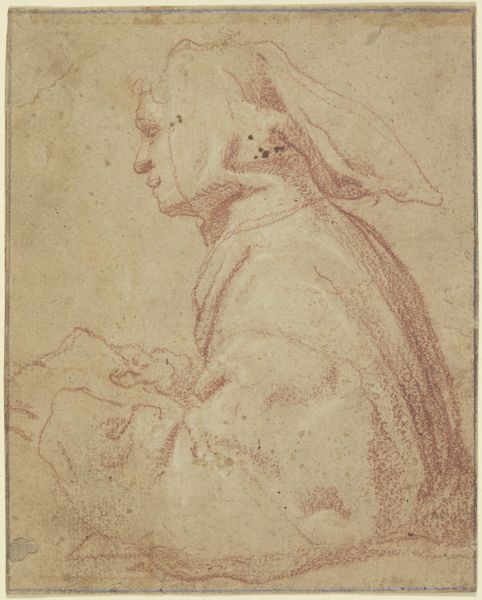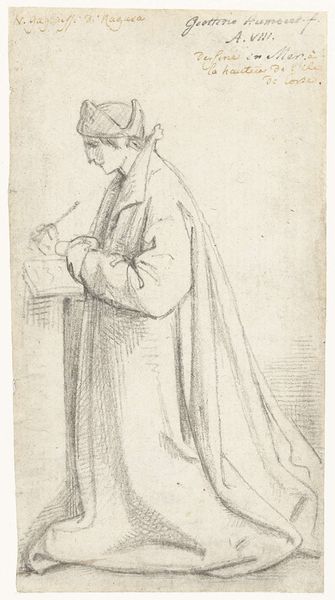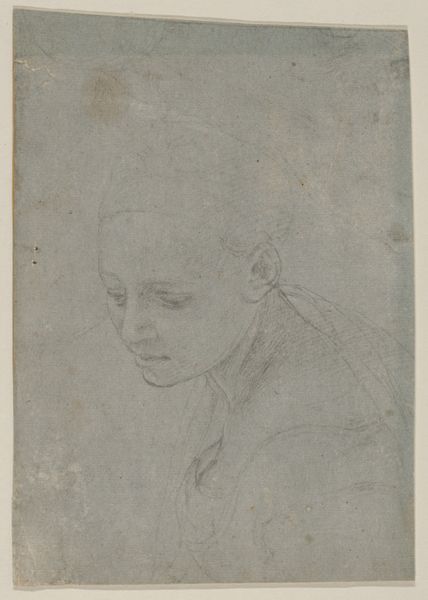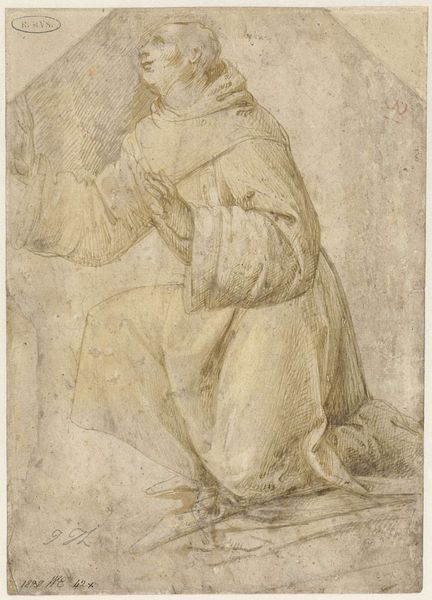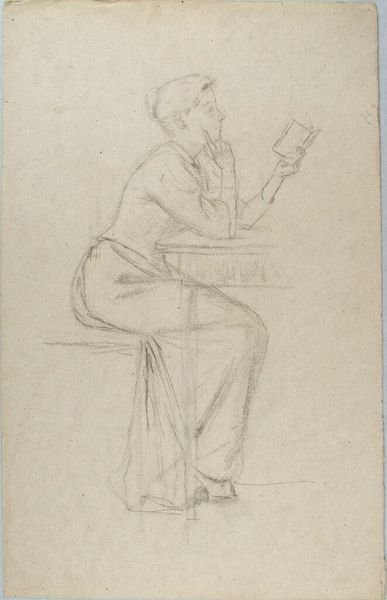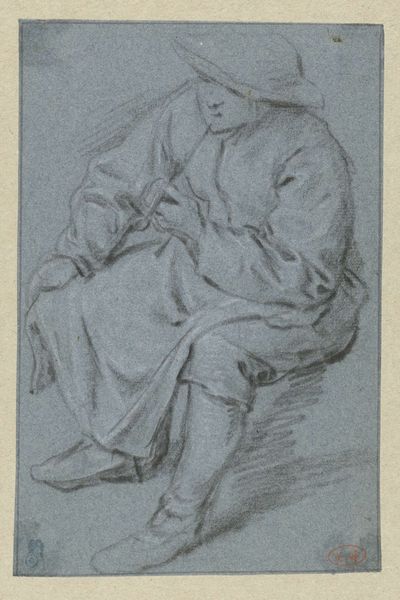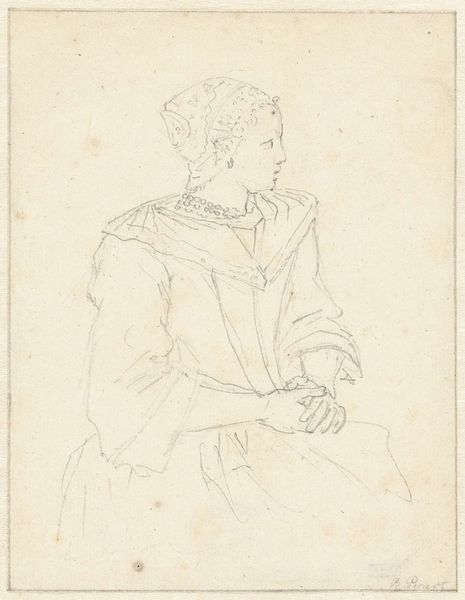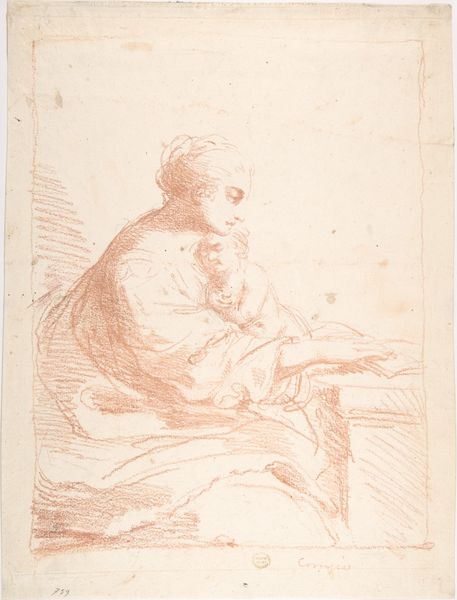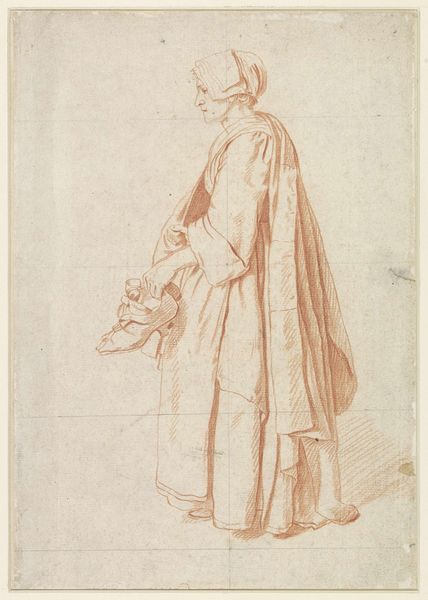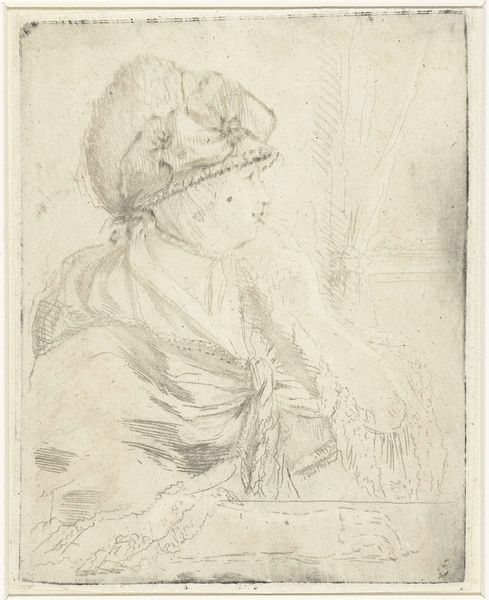
drawing, pencil
#
portrait
#
pencil drawn
#
drawing
#
charcoal drawing
#
mannerism
#
pencil
#
italian-renaissance
Dimensions: height 238 mm, width 188 mm
Copyright: Rijks Museum: Open Domain
Curator: Here we have Jacopo Pontormo’s drawing, "Alessandro de Medici," created sometime between 1505 and 1556. What are your first impressions? Editor: A pensive portrait. There is a muted softness due to the medium that makes the subject seem almost vulnerable. Curator: It’s precisely that vulnerability which I find so compelling. The delicacy of the pencil and charcoal belies the subject's power. The portrait is all about line; it captures contour and form through the most efficient of means. Notice how little shading there is and how Pontormo has defined the fabric simply through the indication of folds. Editor: Absolutely, and knowing Medici’s reputation for ruthless rule, one wonders what Pontormo was trying to convey. The averted gaze suggests perhaps inner conflict or a weariness of command. It invites us to see beyond the Duke's public persona. What were the politics inherent in creating a relatively gentle depiction? Curator: That contrast creates a palpable tension. We might also appreciate the subtlety of the cross-hatching which describes the shadow on the neck, or the slightly abstracted, yet refined execution that defines the soft cap. The skill on display exemplifies the Italian Renaissance style. Editor: Yes, a style that was, in part, funded by the subject’s family, The Medici. That art history is so intimately tied to structures of power reminds me that we must never forget the artist’s patronage; without that, would we even have this moment of reflection on Medici’s visage? Curator: The artwork can still offer something on its own terms; the play of light and shadow across his face, the considered gaze—these transcend simple biography. There's a universality to this introspective moment captured so deftly by Pontormo. Editor: But the drawing isn’t detached from Alessandro’s story! It speaks volumes, hinting at the complexities of power, identity, and representation in 16th-century Florence. Art does not exist in a vacuum, and our understanding deepens when we acknowledge that context. Curator: Perhaps. However, regardless of his historical import, the formal arrangement makes the sketch itself worthy of our regard. Editor: Perhaps, though it is in our conversations that meaning truly unfolds.
Comments
No comments
Be the first to comment and join the conversation on the ultimate creative platform.
